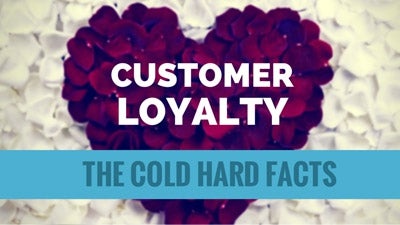
Why does customer loyalty matter?
 Author: Adam Casey is part of the Digital Marketing Team at Crystal Ball. He frequently blogs about the latest news and tips for running a productive and efficient small business.
Author: Adam Casey is part of the Digital Marketing Team at Crystal Ball. He frequently blogs about the latest news and tips for running a productive and efficient small business.
Customer loyalty can boost sales, improve staff morale (who wants to deal with complaints all day?), strengthen your brand and reduce the cost of a sale.
Reducing the Cost of a Sale
Most marketers estimate it costs around six or seven times more to win over a new customer than it does to retain an existing customer. But some suggest the cost of acquiring a customer is much higher—up to 30 times more expensive than keeping an existing customer.
And why is this? Because probability of selling to a new prospect is just 5-20%. Yet the probability of selling to an existing customer rises to 60-70%.
Building Customer Loyalty Builds Brand Value
It’s easy to see that building customer loyalty makes financial sense. But it is worth more than these easily quantifiable metrics about the cost of a sale.
It impacts the value of your brand. A dissatisfied person will tell between 9-15 people about a bad customer experience, according to traditional marketing lore. But social media makes the potential for damage much greater than 15 wary potential customers. What damage is inflicted when a complaint goes viral?
If the damage is great enough it isn’t just going to affect your brand value, but your share price too. And there are a whole lot more people who will think twice before doing business with you.
Improve Morale
How can you expect your customers to love your brand if your employees don’t? Enthusiasm must come from the top and percolate through every part of your business. Good customer service requires a culture that rewards staff when they go the extra mile; that doesn’t place short-term cost-cutting measures ahead of nurturing a culture of good customer service.
Because—as we saw at the beginning of this article—in the long-term, cost cutting and good customer service aren’t contradictory ideas: building customer loyalty makes hard financial sense.
How do we build customer loyalty?
A customer is four times more likely to defect to a competitor if the problem is service-related rather than price related.
Pricing strategy alone isn’t enough to keep customers.
It’s vital to understand what customers want. Ask yourself: Where are the gaps between customer expectations and the goods and service they receive? How do we fill them?
Treat people as individuals. After all, we all are. Your customers are not a homogenous mass; understand their differences and speak to them. Social media provides huge opportunities for personalised personal connections. Make it count.
The formula is simple
Building customer loyalty isn’t rocket science.
It is neatly summed up in this quote from ER Waite: “Goodwill for a business is built by goods, service and truthful advertising.”
More than ever, businesses need to be realistic about the quality of goods and services they are delivering and if they fall short we need to put it right quickly.
Truthful advertising means setting realistic expectations. Even better if it is in your organization’s DNA to find and exploit opportunities to over-deliver on those promises.
But truthful advertising comes in many forms: sharing live information about the progress of a pizza delivery might seem far from traditional advertising—but, when viewed in the context of the cost of retaining a customer versus the cost of acquiring a customer, isn’t this the kind of truthful advertising businesses should really be investing in?
And it beats the traditional “ten to fifteen minutes.”
 Author: Adam Casey is part of the Digital Marketing Team at Crystal Ball. He frequently blogs about the latest news and tips for running a productive and efficient small business.
Author: Adam Casey is part of the Digital Marketing Team at Crystal Ball. He frequently blogs about the latest news and tips for running a productive and efficient small business.
Published: October 14, 2014
7215 Views
7215 Views












